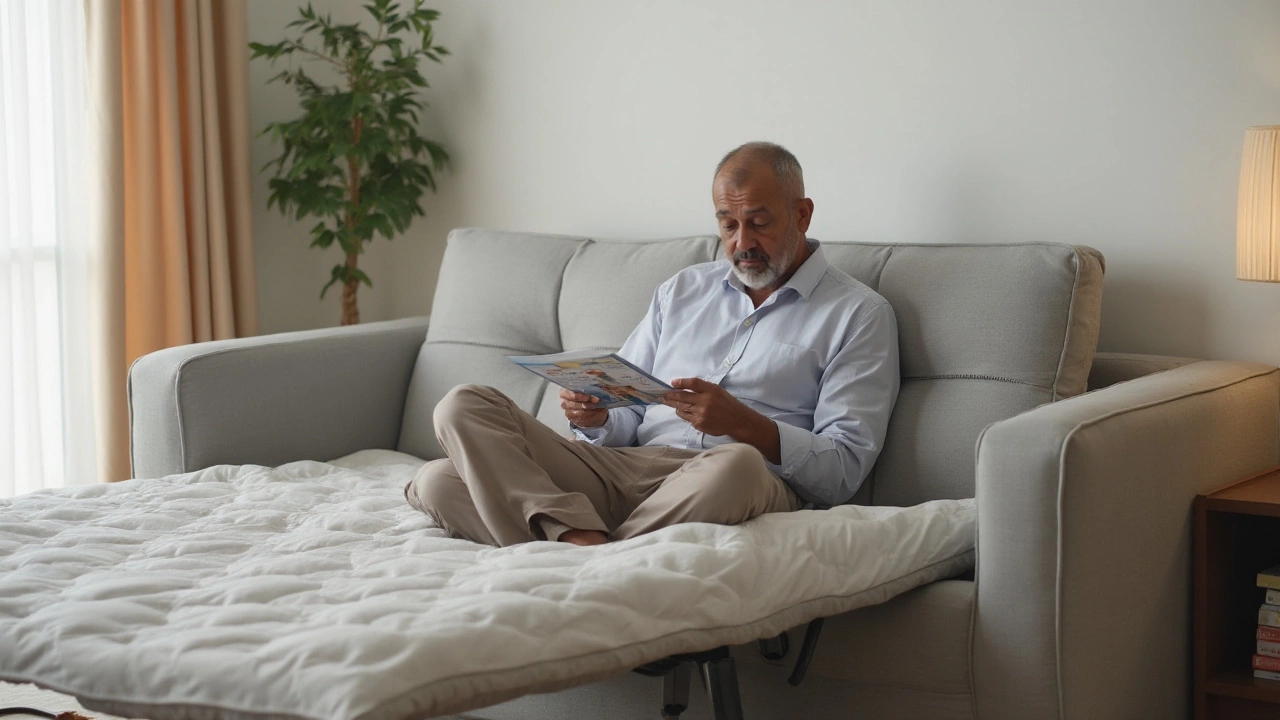Sleep Comfort Made Easy – Sofa Beds, Daybeds, and the Right Couch for Nightly Rest
Ever wonder why some couches feel like a cloud and others make you ache by morning? The secret lies in a mix of design, support, and material. Let’s break down what you need to know so you can pick a piece that lets you snooze without a backache.
Pick the Right Sofa Bed – Not All Are Created Equal
When a sofa doubles as a bed, look for a sturdy frame first. Metal or hardwood frames keep the mattress from sagging after a few nights. Next, check the mattress type. Memory foam offers body‑contouring comfort, while pocket‑spring adds bounce and breathability. A good sofa bed should have a mechanism that’s smooth but firm – you don’t want a spring that rattles every time you sit.
Try the couch out in the store. Sit for a minute, then lie down as if you’re going to sleep. If the cushions sink too far or the back feels too low, the piece is likely to lose support fast. Also, consider the size. A full‑size mattress fits most couples, while a queen gives extra room if your bedroom is spacious.
Daybed Couches – The Space‑Saving Sleep Solution
Daybeds blend a couch and a bed in one sleek frame, perfect for small apartments. The key to comfort is the cushion profile. A thicker, high‑density foam cushion on the seating side will keep you upright during the day, while a softer, plush layer on the sleeping side lets you relax at night.
Don’t forget the mattress. A thin, high‑resilience foam pad works well because it folds easily when the daybed converts back to a couch. If you plan to use it often, upgrade to a dedicated mattress that fits the daybed’s dimensions – it will extend the life of the frame and keep you comfortable.
Styling tip: pick a neutral fabric for the daybed and add colorful throws or pillows for a cozy look. This way, you get a functional sleeping spot without sacrificing style.
Beyond the furniture itself, think about the room’s layout. Place a rug under the couch or daybed to add a soft landing for your feet when you get out of bed. A rug also helps with insulation, keeping the surface warmer on chilly nights.
Finally, protect your investment. A breathable slipcover guards against spills and pet hair, and it’s easy to wash. When the cover is clean, the couch stays fresh, and you’ll sleep better knowing the surface is hygienic.
In short, a good night’s sleep on a couch starts with a solid frame, the right mattress or foam, and a little extra care like a rug or cover. Pick a sofa bed or daybed that matches your space, test it yourself, and you’ll wake up feeling refreshed instead of stiff.
Is Sleeping on a Sofa Bed Hurting Your Back?
Many people ponder whether it's harmful to catch their z's on a sofa bed. This article delves into how sleeping on a sofa bed impacts your back health. We explore the design of sofa beds, their firmness, and materials to understand their implications on the spinal posture. Helpful tips and alternatives are provided for those who frequently use sofa beds. Understanding these factors can help you make informed decisions about your sleep settings.
Disadvantages of Sleeping Couches: What to Consider Before You Buy
Sleeping couches, or sofa beds, are a versatile furniture choice, blending style and functionality in limited spaces. Despite their popularity, these dual-purpose pieces come with several potential drawbacks worth understanding. Issues such as lack of comfort, space limitations, and durability concerns are common among users. Additionally, sleeping couches may not offer equal support to traditional beds, impacting sleep quality over time. Explore the disadvantages of sleeping couches to make an informed decision for your home.






